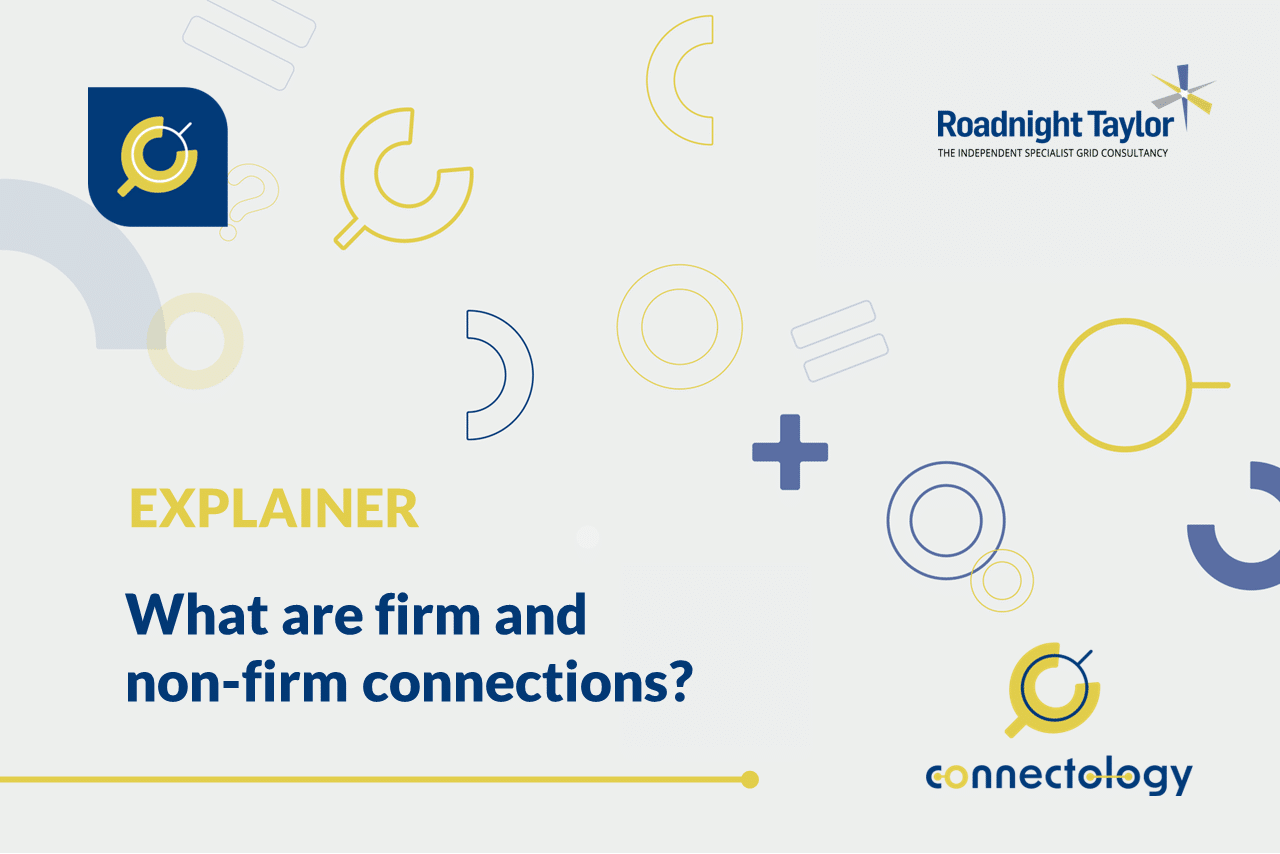What are firm and non-firm connections?
The terms firm and non-firm are used in relation to grid connections in various ways. The two main ways, as explained below, are in relation to the connection design and network access.
Article by Pete Aston – acknowledged expert in networks
Pete joined Roadnight Taylor from Western Power Distribution, the UK’s largest DNO, where he was Primary System Design Manager. He led a team of sixty responsible for all connections to the extra high voltage network, as well as leading WPD’s interaction with National Grid (NGET and NGESO) at the transmission/distribution boundary.
06 September 2023

Firm and non-firm connection designs
A connection is firm or non-firm depending on how many circuits supply the site and the arrangement of those circuits. When DNOs refer to a firm or non-firm connection, they are usually referring to the connection arrangement.
Non-firm connections have only one circuit into the site and are the simplest type of connection. Examples of this include individual houses (with a single service cable into the meter box), up to large generator connections with a single circuit into the site.
Firm connections have two or more circuits into the site and can be complex. The arrangement of these circuits depends on the criticality of the load being supplied. For example, a connection can have a switched-firm connection, where the site will experience an outage if the main circuit feeding the site is switched out. But the alternative circuit can be switched in, following either manual or automatic switching. Full firm connections will not experience an outage if one of the circuits into the site is switched out. Additional supply security can be provided by sourcing each circuit into site from a different substation, for sites that have highly critical supplies.
| Type of connection | Description |
|---|---|
| Non-firm | One only circuit into site. Off for a circuit outage |
| Switched firm (manual) | Two circuits into site. Off temporarily for a circuit outage. Supply restored via manual switching (potentially up to a few hours) |
| Switched firm (automatic) | Two circuits into site. Off temporarily for a circuit. Supply restored via automatic switching (potentially up to seconds or minutes) |
| Firm | Two or more circuits into site. No loss of supply for an outage of an individual circuit |
Firm and non-firm network access
Network access is the ability of a site to be able to export or import their full power requirement. When TOs or NGESO refer to a firm or non-firm connection, they are usually referring to network access. At transmission, connection capacity (officially Connection Entry Capacity (CEC)) and transmission access capacity (officially Transmission Entry Capacity (TEC)) are two separate values. Whereas at distribution, there is no such distinction.
A site with firm network access can always access their full power requirement (provided their site is connected to grid). Most sites have historically had firm network access.
A site with non-firm network access is not always able to access their full power requirement, due to limitations in network capacity. Types of non-firm network access include Active Network Management (ANM), intertripping, constraints on the wider network (applied via instruction from a control room), and timed connections. Under these arrangements, the site usually has a connection to the network, but the output of the site has to be reduced to a specified level. Both temporary and enduring non-firm network access options are often available. The advantage of a non-firm network access connection is usually a cheaper and/or faster connection, to avoid reinforcement works.
Commercially firm offers
Firm and non-firm connection designs and network access can also get confused with requests for a ‘commercially firm’ offer. This is where an applicant for a connection wishes to receive a connection offer (a ‘firm’ offer) rather than receiving a budget estimate of some kind. So it is important to understand the context when someone is talking about a firm connection, because it can mean a number of different things.
How can Roadnight Taylor help?
We can help you understand the implications of the firm and non-firm status of a potential application, investment or acquisition.
Contact us
Roadnight Taylor can help clients understand the implications of the firm and non-firm status.
To find out more call us on 01993 830571 or send us a message via our contact form.






